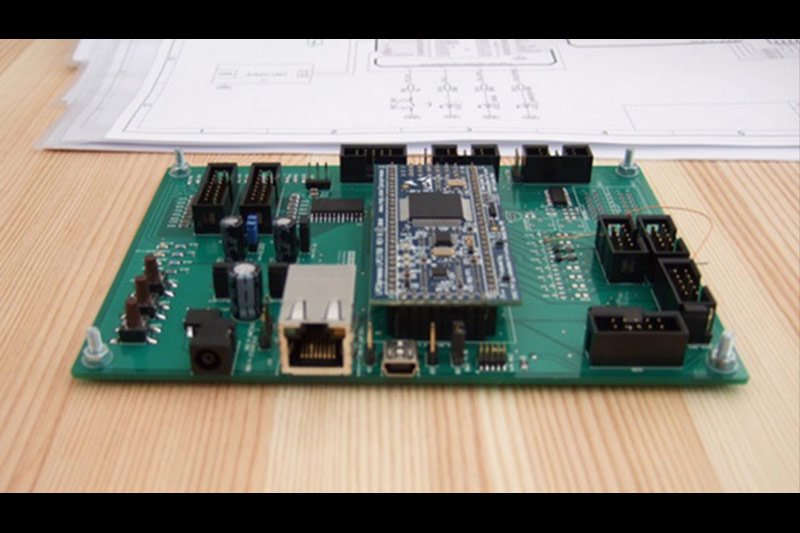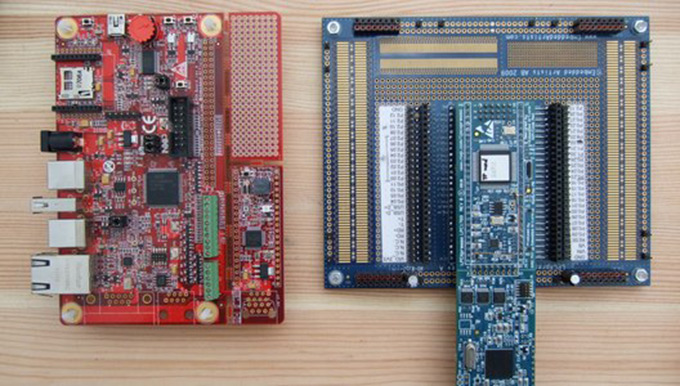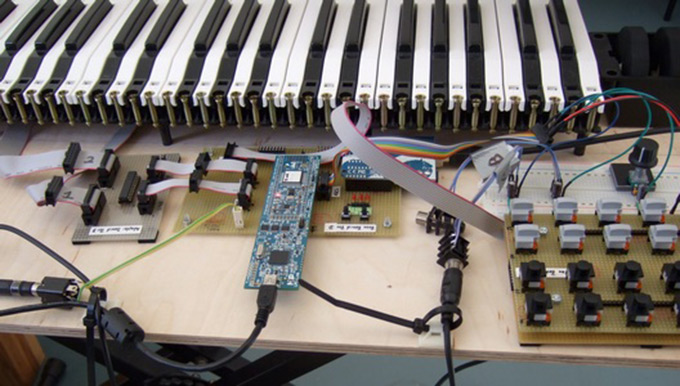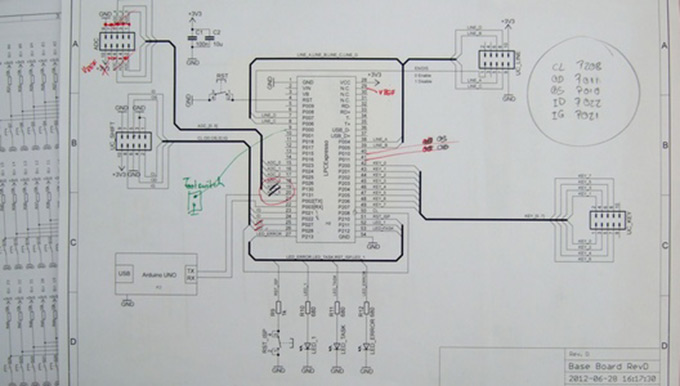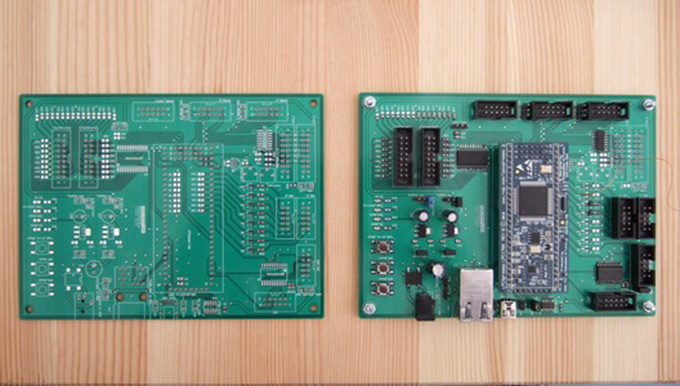We were really excited to get Nonlinear Labs’ first printed circuit board (PCB) back from the factory the other day.
Making things can be highly satisfying in at least two ways: the enjoyment of the actual process and the thrill of seeing the final result.
After the first phase of working with breadboards and perfboards, it was time to make something with fewer loose wires, something closer to a production unit — a PCB. This meant obtaining the needed tools and selecting the right manufacturing partners.
Software tools for electronic design can be very costly. Our first choice in terms of affordability and features is Altium Designer. It's a powerful program that we felt we could work with. Although Daniel has worked with Altium before, it still took a couple of days for him to get back into the swing of things.
The first board we decided to make contains the central microcontroller unit (NXP LPC1769) and some peripheral elements. The level of complexity is not very high, so this was a good way to start to feel at ease with the software.
Although you often still need to draw every track on your board, Altium Designer automates a lot of the PCB design process. You can even visualize the size and position of each individual component in 3D in order to see if everything will physically fit together, or to see if you might need larger housing for the board. That's very useful.
Next step: find a local manufacturer of PCBs. Whenever possible, we work very locally. One of the advantages is that we can be more involved with the manufacturing process, which is good for ensuring a high level of quality. So we picked a PCB manufacturer here in Berlin. Eight days later, our first board was hand-delivered by an employee of the company which meant that we had someone who we could talk to about quality aspects.
Once we had the boards (we actually ordered 3 copies to allow for experimentation, breakage, and so on), we began assembling and testing, looking for errors... And after some small corrections it worked!
This is an important step since the ARM-based controller unit is where all the messages of the TCD protocol are generated: it's the "control brain" of our system. Slowly, but surely our first instrument takes form!
